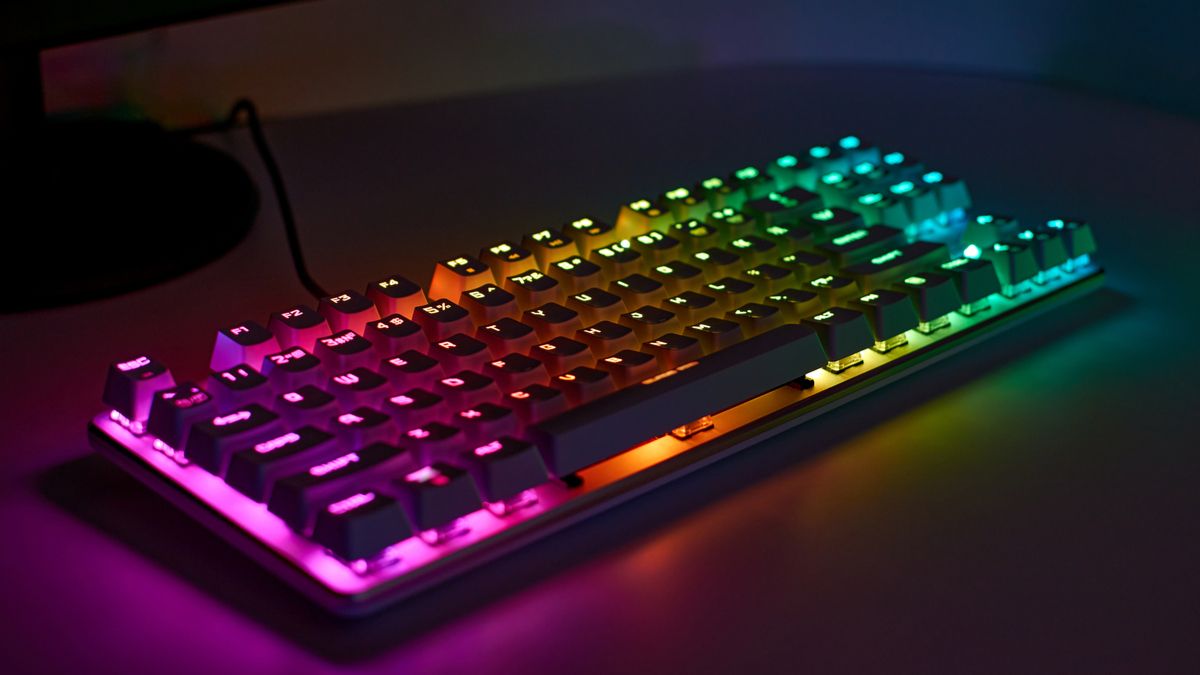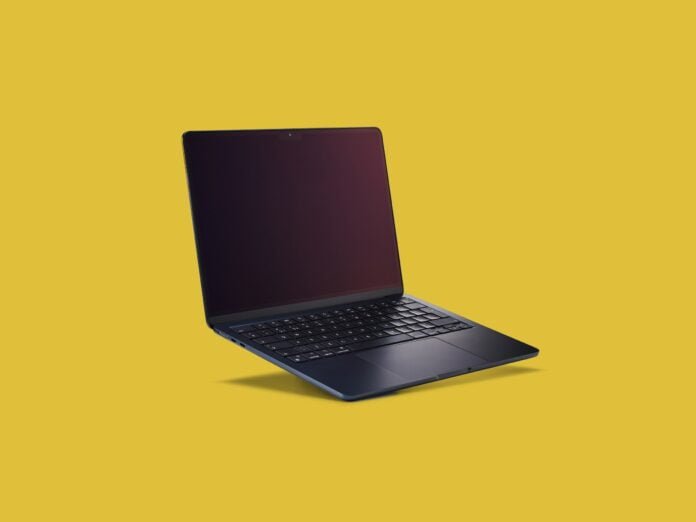Choosing the right keyboard layout that suits your needs is crucial. This article will guide you through the process and help you make an informed decision.
A keyboard is an essential tool for anyone who spends a significant amount of time on their computer, whether it’s for work, gaming, or general use. But with so many different layouts available, such as QWERTY, AZERTY, and Dvorak, it can be challenging to determine which one is best for you.
We will explore the various keyboard layouts and their unique features, advantages, and disadvantages. We will discuss factors to consider when choosing a layout, including typing speed, language requirements, and personal preferences. So read on to find the perfect keyboard layout that will enhance your typing experience and boost your productivity.
History Of Keyboard Layouts
The history of keyboard layouts is a fascinating journey that has evolved over time to suit the diverse needs of typists and computer users. From the widely known QWERTY layout to alternative and ergonomic designs, the evolution of keyboard layouts has shaped the way we interact with technology. Understanding the origins and emergence of different keyboard layouts can help individuals make informed choices when selecting the right keyboard for their specific needs.
Qwerty Layout Origins
The QWERTY keyboard layout, named after the first six letters in the top row, was designed by Christopher Sholes in 1873 for the Sholes and Glidden typewriter. The layout was intended to address the mechanical limitations of early typewriters, preventing jamming by placing commonly used letter pairs apart. Despite criticisms of inefficiency and hand strain, the QWERTY layout became the standard for typewriters and later computer keyboards, shaping the modern typing experience.
Alternative Layouts Emergence
As technology advanced, alternative keyboard layouts began to emerge, aiming to enhance typing speed, comfort, and ergonomics. One notable alternative is the Dvorak Simplified Keyboard, developed by Dr. August Dvorak and his brother-in-law Dr. William Dealey in the 1930s. The Dvorak layout was scientifically designed to reduce finger movement and increase typing efficiency. Additionally, other layouts such as Colemak and Workman have gained popularity among users seeking optimized typing experiences.
Popular Keyboard Layouts

When it comes to keyboards, one size does not fit all. Popular keyboard layouts such as QWERTY, AZERTY, DVORAK, and Colemak cater to different needs and preferences. Each layout offers unique features and benefits, making it crucial to choose the right one that aligns with your specific requirements. Let’s explore these popular keyboard layouts in more detail to help you make an informed decision.
Qwerty Layout
The QWERTY layout is the most widely used keyboard layout globally. It is named after the first six letters in the top row. The layout is designed for the English language and is characterized by its familiar arrangement of keys. Many people find the QWERTY layout intuitive and easy to use, particularly for typing in English.
Azerty Layout
The AZERTY layout is primarily used in French-speaking countries and is the standard keyboard layout for French. Similar to the QWERTY layout, it is named after the first few letters in the top row. The arrangement of keys in the AZERTY layout is optimized for typing in French, with specific characters and accents easily accessible.
Dvorak Layout
The DVORAK layout is an alternative to the QWERTY layout, designed to reduce finger movement and increase typing efficiency. It places the most commonly used keys in the English language in the center row for easier access. While less popular than QWERTY, some users find the DVORAK layout to be more ergonomic and conducive to faster typing once mastered.
Colemak Layout
The Colemak layout is another ergonomic alternative to the traditional QWERTY layout. It is designed to minimize finger movement and maximize typing comfort. The Colemak layout retains some familiarity with the QWERTY layout, making it easier for users to transition. It emphasizes efficient typing and aims to reduce strain and fatigue during extended typing sessions.
Factors To Consider
When choosing the right keyboard layout for your needs, several factors should be considered. These factors can vary based on individual preferences and requirements. Here are some essential aspects to keep in mind:
Typing Comfort And Ergonomics
Ensuring typing comfort and proper ergonomics is crucial for preventing fatigue and strain on your hands and wrists. The layout should promote a natural hand position and provide adequate wrist support.
Language And Special Characters Support
Choose a layout that supports your preferred language and includes easy access to special characters relevant to your work or communication needs. This can enhance efficiency and convenience.
Key Placement And Size
The placement and size of keys play a significant role in typing speed and accuracy. Opt for a layout that feels intuitive and comfortable based on your hand size and typing style.
Adaptability And Learning Curve
Consider the adaptability of the layout to your current skills and the potential learning curve required. It’s essential to choose a layout that strikes a balance between familiarity and enhanced functionality.
Specialized Keyboard Layouts
When it comes to keyboard layouts, one size does not fit all. Different individuals have different needs and preferences, and sometimes a standard QWERTY layout may not be the best option. This is where specialized keyboard layouts come into play, offering tailored designs to cater to specific requirements. In this article, we’ll explore three popular specialized keyboard layouts: Programmer-friendly Layouts, Gaming-centric Layouts, and Accessibility-focused Layouts.
Programmer-friendly Layouts
For programmers, having a keyboard layout optimized for coding is essential. These layouts focus on ergonomics, efficiency, and quick access to frequently used characters and symbols. One popular option is the Colemak layout which aims to improve upon the QWERTY layout by minimizing finger movement and maximizing keystrokes on the home row. Another popular choice is the Dvorak Simplified Keyboard layout which places commonly used letters on the home row for improved typing speed.
Gaming-centric Layouts
Gaming keyboards often have specialized layouts designed to enhance the gaming experience. These layouts prioritize quick and accurate access to gaming-specific keys such as WASD for movement and dedicated macro keys for customizable shortcuts. Additionally, gaming-centric layouts may feature backlighting options to improve visibility in low-light gaming environments. Some popular gaming-centric layouts include the Standard US layout, 10-keyless layout, and the Compact layout.
Accessibility-focused Layouts
Accessibility-focused keyboard layouts aim to make typing more comfortable and inclusive for individuals with physical disabilities or impairments. These layouts are designed to minimize the strain on hands and wrists, and provide alternative options for individuals with limited mobility. One common accessibility-focused layout is the Maltron keyboard, which features a curved design and can be customized to accommodate individual user needs. Another notable option is the Frogpad keyboard, a one-handed layout that offers an alternative to traditional two-handed typing.
Ultimately, choosing the right keyboard layout boils down to personal preference, specific needs, and the type of tasks you commonly perform. Specialized keyboard layouts provide tailored solutions for programmers, gamers, and individuals with physical disabilities, offering improved productivity, comfort, and accessibility. By understanding your unique requirements, you can select a keyboard layout that enhances your overall typing experience.
Customizing Your Keyboard Layout

Choosing the right keyboard layout is essential for maximizing your productivity and comfort while typing. However, one size does not fit all, and sometimes you may need to customize your keyboard layout to suit your individual needs. In this post, we will explore two methods of customizing your keyboard layout: software options and physical keyboard modifications.
Software Options
If you’re looking for a quick and hassle-free way to customize your keyboard layout, software options are a great choice. With the help of software, you can easily remap keys, change the behavior of certain keys, and even create custom shortcuts. Here are a few popular software options:
- AutoHotkey: This powerful scripting tool allows you to create custom scripts to automate tasks and remap keys. It’s highly customizable and offers a wide range of possibilities.
- SharpKeys: For those who prefer a more user-friendly interface, SharpKeys is a great option. With its simple and intuitive interface, you can easily remap keys without any programming knowledge.
- Microsoft Keyboard Layout Creator: Ideal for creating custom keyboard layouts, this software from Microsoft allows you to create personalized layouts for different languages or special characters.
Physical Keyboard Modifications
If you’re someone who prefers a more tactile approach or if you’re not comfortable using software to customize your keyboard layout, physical keyboard modifications may be the solution for you. These modifications involve physically altering your keyboard to suit your needs. Here are a few common modifications:
- Keycap Replacement: Swapping out keycaps with different labels or symbols can help you create a customized layout that matches your preferences or specialized needs.
- Stickers: Another simple yet effective way to customize your keyboard is by using stickers. You can find stickers with different layouts or labels and place them on the keys to suit your requirements.
- External Keyboards: If you need a more radical change, using an external keyboard with a completely different layout can be a viable option. This allows you to choose a layout that feels more comfortable or efficient for your specific needs.
By customizing your keyboard layout, you can optimize your typing experience and enhance your productivity. Whether you prefer software options or physical modifications, finding the right keyboard layout for your needs is an investment that pays off in the long run.
Impact On Typing Speed And Efficiency
Selecting the appropriate keyboard layout for your needs can greatly impact your typing speed and efficiency. The right layout can optimize your workflow and enhance your overall productivity.
Research Findings
typing speed and efficiency. Research findings reveal that layout optimization plays a crucial role.
Personal Testimonials
Users often report significant improvements in typing speed with the right layout. Customized setups can enhance efficiency and overall user experience.
Transitioning To A New Layout
Transitioning to a new keyboard layout can be both exciting and challenging. Whether you are switching to a more efficient layout, like Dvorak or Colemak, or trying out a new language layout, such as Azerty or QWERTZ, there are some techniques and strategies that can help you adapt quickly and master your new keyboard layout.
Practice Techniques
Practice plays a crucial role in successfully transitioning to a new keyboard layout. Here are some effective practice techniques that can help you become familiar with your new layout:
- Start Slow: Begin by typing slowly and deliberately. Focus on accuracy rather than speed in the beginning.
- Use Typing Software: There are various typing software programs available that can help improve your typing speed and accuracy. These programs often come with lessons and exercises specifically designed for different keyboard layouts. Take advantage of these resources to practice regularly and refine your skills.
- Set Realistic Goals: Set small, achievable goals for yourself. Aim to improve your speed and accuracy gradually over time, rather than expecting immediate perfection.
- Practice Daily: Consistency is key. Dedicate a portion of your daily routine to practice on your new layout. The more you practice, the faster you’ll become accustomed to it.
Overcoming Challenges
Transitioning to a new keyboard layout can come with its fair share of challenges. Here are some common difficulties you might face and how to overcome them:
- Frustration: It’s normal to feel frustrated initially when transitioning to a new layout. Remember that it takes time to adjust and improve. Stay patient and persevere.
- Mistakes and Errors: Making mistakes is part of the learning process. Don’t be discouraged by errors. Instead, use them as opportunities to identify areas where you need more practice.
- Consistency: It can be tempting to switch back to your old layout when faced with difficulties. However, maintaining consistency is essential. Resist the urge to switch back and keep practicing your new layout consistently.
- Seek Support: Connect with others who have transitioned to the same keyboard layout. Online forums, communities, or even friends and colleagues can provide support, advice, and motivation during your transition.
By implementing these practice techniques and overcoming the challenges that come with transitioning to a new keyboard layout, you’ll be well on your way to becoming proficient and efficient with your new keyboard layout. Remember, practice makes perfect, and with perseverance, you’ll soon master your new layout.

Credit: www.rtings.com
Conclusion And Final Thoughts
Here are some key considerations when choosing the right keyboard layout:
Choosing Wisely
- Consider your typing habits and preferences
- Evaluate the type of work you do on a regular basis
- Take ergonomics into account for comfort and efficiency
Personal Preference And Experimentation
- Try out different keyboard layouts to see what works best
- Don’t be afraid to customize your layout to suit your needs
Frequently Asked Questions Of Choosing The Right Keyboard Layout For Your Needs
How Do I Choose The Right Keyboard Layout?
To choose the right keyboard layout, consider your typing needs and preferences. Think about the language you use, the keys’ positions, and any additional features like ergonomic design or programmable keys. Test out different layouts to find one that is comfortable and efficient for you.
What Keyboard Layout Should I Get?
Choose a keyboard layout based on your comfort and typing style. Common options include QWERTY and ergonomic split keyboards. Try different layouts to find what works best for you.
How Can We Choose The Right Keyboard?
To choose the right keyboard, consider your needs, such as typing style, budget, and features like mechanical or membrane keys. Try out different keyboards in store to find the one that feels comfortable and suits your preferences.
What Are The 4 Keyboard Layouts?
The four keyboard layouts are QWERTY, AZERTY, QWERTZ, and Dvorak. Each layout has a unique arrangement of keys.
Conclusion
Selecting the right keyboard layout is crucial for enhancing productivity and comfort. Whether it’s QWERTY, DVORAK, or another option, consider your typing habits and preferences. Take the time to analyze your needs and make an informed decision for a better typing experience.
Your choice matters!



